Sample Heading
Sample Heading
Central Horticultural Experiment Station Chettalli
Primary tabs
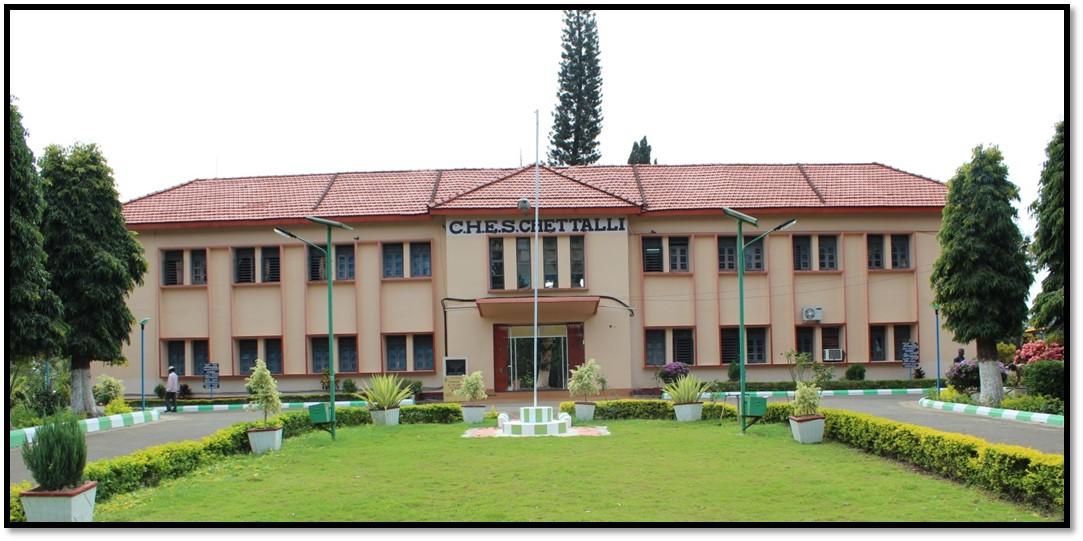
Central Horticultural Experiment Station, Chettalli (Kodagu District, Karnataka) is a regional station of Indian Institute of Horticultural Research (IIHR), Bengaluru under Indian Council of Agricultural Research (ICAR), New Delhi. The Centre was started as Orange Research Centre in 1947 to study the problem of Coorg mandarin decline by the erstwhile State Government of Coorg. Subsequently, the station was redesignated as Coorg Fruit Research Station in 1957 to conduct evaluation and adaptation trials of collected other tropical and sub-tropical fruits. It was upgraded as one of the six Regional Fruit Research Stations during 1960 in the country funded by ICAR. Later, the station was handed over to IIHR on 1st February 1972 to intensify work on all aspects of horticultural research specific to the region. The station occupies an area of 92 ha. Four research laboratories of entomology, plant pathology, horticulture, and soil science including mushroom cultivation unit, vermicomposting unit, and a full pledged library and an administrative wing are located in the main building within the experimental farm. The mandated crop of the centre is Coorg mandarin with major emphasis on citrus die-back disease. The Station also works on underutilized horticultural crops like, avocado, teasle gourd, rambutan, litchi, mangosteen, etc. The Station has a well-developed nursery unit for production and distribution of true-to-type disease-free citrus and other planting materials. Trichoderma harzianum cultures, Oyster mushroom spawn and fruit fly traps are supplied to the farmers and soil testing is also performed. Transfer of Technology under the Tribal Sub-Plan (TSP) and Schedule Caste Sub-Plan (SCSP) schemes is also being taken up at the Station.
Past Heads of the Station
|
S. No. |
Name and designation |
Period |
|
|
From |
To |
||
|
1 |
Shri K.M. Ganapathy |
01-02-1972 |
11-01-1978 |
|
2 |
Dr. I.S. Yadav |
12-01-1978 |
04-06-1979 |
|
3 |
Shri K.A. Nanaya I/c |
05-06-1979 |
13-06-1979 |
|
4 |
Dr. K.C. Srivastava |
14-06-1979 |
23-12-1979 |
|
5 |
Dr. S.P. Singh |
24-12-1979 |
30-11-1983 |
|
6 |
Dr. B. Prasannakumar I/c |
01-12-1983 |
02-01-1984 |
|
7 |
Shri S. Prabhukumar |
03-01-1984 |
18-08-1986 |
|
8 |
Shri V.V. Sulladmath I/c |
19-08-1986 |
09-11-1986 |
|
9 |
Dr. A.G. Purohith |
10-11-1986 |
14-10-1992 |
|
10 |
Dr. N. Jaganmohan |
15-10-1992 |
30-11-1994 |
|
11 |
Dr. H. Ravishankar I/c |
01-12-1994 |
22-12-1996 |
|
12 |
Dr. H. Ravishankar |
23-12-1996 |
22-12-1999 |
|
13 |
Shri V.V. Sulladmath I/c |
23-12-1999 |
10-08-2000 |
|
14 |
Dr. R. Chithiraichelvan I/c |
11-08-2000 |
10-07-2003 |
|
15 |
Dr. H. Ravishankar I/c |
11-07-2003 |
06-01-2008 |
|
16 |
Dr. S. Doijode I/c |
07-01-2008 |
17-04-2009 |
|
17 |
Dr. K. Shivaramu I/c |
18-04-2009 |
16-04-2010 |
|
18 |
Dr. P.C. Tripathi |
17-04-2010 |
15-06-2015 |
|
19 |
Dr. R. Senthil Kumar I/c |
16-06-2015 |
07-08-2016 |
|
20 |
Dr. I.N. Doreyappa Gowda I/c |
08-08-2016 |
14-03-2018 |
|
21 |
Dr. L.K. Bharathi I/c |
14-03-2018 |
14-08-2020 FN |
|
22 |
Dr. Shivaram Bhatt I/c |
14-08-2020 AN |
08-09-2020 FN |
|
23 |
Dr. Saju George I/c |
08-09-2020 AN |
04-07-2022 FN |
|
24 |
Dr. Rajendiran S. I/c |
04-07-2022 AN |
Till date |
Mandate of the Station
- To undertake basic and strategic research for enhancing productivity, quality and utility of horticultural crops of the Coorg region.
- To act as a repository of plant genetic resources and scientific information in relation to horticultural crops.
- To undertake front line demonstration in new technologies evolved and to impart training for upgrading scientific knowledge of technical personnel involved in horticultural enterprises.
Achievements of the Station
- The station has more than 1200 germplasms collections of horticultural crops which includes Citrus, Coorg Mandarin, Rambutan, Mangosteen, Kokum, Malabar Tamrind, Garcinia species, Avocado, spine gourds, Passion fruit, Litchi, Longan, Jamun, Karonda, Black pepper, Rose, Anthurium, etc.
- Organized National Conference on Horticultural Crops of Humid Tropics Diversification for Sustainability was organized by CHES, ICAR-IIHR, Chettalli at Gandhi Maidhan,
Madikeri, Coorg on May 20-21, 2017. - Organized a Field Day cum Farmer-Scientist Interaction Meet on 19th February, 2021 and displayed live performance of around 22 fruit crops, 45 promising IIHR varieties/hybrids of 25 vegetable crops and 7 gladiolus and 2 China aster varieties of flower crops and about 500 farmers participated.
- Organized a Field day on Nutrition Garden for the farmers of Kodagu district on 17th February, 2022 and demonstrated a model Arka Vegetable Nutrigarden with 25 vegetable crops in 400 m2 area.
- Organized a National Symposium on Horticultural Crops of Humid Tropics for Nutritional and Livelihood Security (NSHCHT) at Hotel Crystal Court, Madikeri, Kodagu, Karnataka during 02-03 Dec., 2022.
- Annually more than 90,000 planting materials, mushroom spawns – 5-10 q; Trichoderma harzianum culture – 15-20 q and fruitfly traps 500-1000 numbers are supplied to farmers and other stakeholders.
- In last five years, more than 20 trainings and capacity building programmes were organized to the farmers, students and other stakeholders.
- CHES varieties are commercialized and licensed to private nurseries for large scale multiplication (Avocado var. Arka Supreme-3 license; Black pepper var. Arka Coorg Excel-1 license)

Further information
Director
Indian Institute of Horticultural research
Hessaraghatta Lake Post
Bangalore-560 0089
Phone-080-28466471 Fax-080 -28466291
Email: director.iihr@icar.gov.in
=====================================
Dr. Rajendiran S
Senior & I/c Head
Central Horticultural experiment Station, Chettalli-571 248
Mobile: 7892882351 Landline : 08276 -266635
Email: chesc.iihr@icar.gov.in, Rajendiran.S@icar.gov.in
Coorg mandarin- High Yielding Selection
The plants of this clone are vigorous and upright. Fruits were subglobose, depressed at distal end, frilled at stock end; ripe fruits were deep orange to yellow in colour. The fruit weight ranged between 90 and 105 g with 10-12 segments. Fruits contained 40% juice with TSS 10° Brix and 0.4-0.6% acidity and 41.6 mg/l00 mL ascorbic acid. The average yield of a ten year old plant is 800-1000 fruits. Nearly 1,50,000 grafted plants of this clone were supplied to the planters till date.


Avocado cv. Arka Supreme
It is a regular fruit bearing and high yielding seedling selection from local collection with spreading type growth habit. A fully grown tree gives around 175-200 kg of fruits/plant with an average fruit weight of 367-428 g. The fruits are oblong with 7.8 ° Brix TSS. Total fat content is 20%. The flowering behavior of this variety falls under Type “A” category. About 20000 grafted plants of this variety had been supplied to Karnataka, Tamil Nadu, Kerala, AP, Telengana, Maharashtra and NEH states.


Avocado cv. Arka Coorg Ravi
It is seedling selection and released during 2022. Fruits are shiny and dark green in colour. Fruit weight ranged from 450-600 g, pulp recovery is more than 80 per cent. It is regular and high yielding (150-200 kg/plant). The flowering behaviour is B type and fat content varied from 12-14 %. Nearly 15,000 grafted plants were supplied to the farmers till date.



Teasel Gourd cv. Arka Bharath
This high yielding variety is identified at institute level. It is a selection from the germplasm collection. Plants are vigorous. Vine grows up to 6 m tall. Fruits are dark green, long oval with soft edible seeds at maturity. Fruit weight is around 100 g. Average fruit yield is 10 t/ha and suitable for cultivation in high altitude areas.



More than 1, 20,000 plants had been supplied to the farming community.
Black pepper cv. Arka Coorg Excel
High yielding black pepper variety identified at Chettalli and tested under the joint programme of IIHR and IISR. It is a regular bearer with bold seeds (583 g/100 seeds) and long spike (14.2 cm). The spike length is more than the existing commercial varieties and dry seed weight is higher. A ten year old vine yields 8.23 kg of green berry/vine under rainfed conditions. This variety found performing well in Coorg region. One license and commercialization had been done.

Rambutan cv. Arka Coorg Arun
This is semi-spreading, early maturing, medium size tree. Flowering happens in February. Fruits ripen in September-October. Fruit weight ranges from 40 to 45 g. Fruit has free stone, white colored, thick, firm, dry and sweet aril and aril is not attached to testa. The TSS is 17.5° Brix, Vitamin C content is 38 mg/100 g pulp, aril recovery is 42% and fruit yield is 1000-1500 fruits/tree.


Rambutan cv. Arka Coorg Peetabh
This is semi spreading, regular bearer and a mid season variety. Flowering occurs in February. Fruits are yellow in colour and ripen in September-October. Fruit weight is 25-30 g. Aril white, juicy, sweet with 18.5° Brix TSS. Aril recovery is 51.0% and yields 1200-1500 fruits/tree.


Passion fruit cv. Kaveri
This is high yielding hybrid developed in 1986. This is a cross between yellow and purple varieties. Each plant bears 40-60 fruits per vine and produces around 200 tonnes of fruits/ha over a three year cropping period. Fruits are oval to round and purple dotted. Fruits contain 25-30 % juice, 11.5-12 % total sugars and 3.0-3.5 mg citric acid. This hybrid is tolerant to Alternaria leaf spot, Fusarium collar rot and nematodes.


Papaya cv. Coorg Honey Dew
This is a Gynodioecious selection from Honey Dew. Flowers are either female or hermaphrodite. Fruits borne from female flowers are almost seedless. Fruits are long to oval and weigh 2-3.5 kg. The fruit yield/plant/year is 40-60. The average yield in 3 years is 200 tonnes/ha.


Production Technology for Coorg Mandarin
The improved production technology for Coorg mandarin was developed. This has five different components. Citrus rootstocks such as Rangpur lime, trifoliate orange, rough lemon should be used for production of buddlings of Coorg mandarin. The application of 600 g N, 200 g P2O5 and 400 g K2O per tree per year for the healthy budded plants of Coorg mandarin is recommended for optimum growth and productivity. Three to four sprays of zinc sulphate (0.2%) and magnesium sulphate (0.5%) with lime during new flush period is recommended for better growth and production. For control of citrus mealy bug, lady bird beetle (Cryptolaemus montrouzieri Muls) should be used. Verticilium lecani and Bacillus thrungiensis can be successfully used for control of soft green scale and citrus butterfly, respectively. Trichoderma harzianum should be used for control of Phytophthora diseases.
Rejuvenation Technology for Coorg Mandarin
The rejuvenation technology for Coorg mandarin consists of application of nutrient through soil and foliar application and control of diseases and pests. The soil application of 25 kg FYM + 5 kg Neem cake + 150 g Trichoderma harzianum + 400 g N, 125 g P2O5 and 275 g K2O in two splits (pre- and post-monsoon) + l kg dolomite twice (June and October)is recommended. The remaining 220 g N, 75 g P2O5 and 25 g K2O should be given as 8-10 foliar applications at monthly intervals. Application of zinc sulphate (0.2%), magnesium sulphate (0.5%) calcium chloride/ calcium nitrate (0.5%) once a month is recommended. Spraying of Imidacloprid at 10 days interval during peak flush periods and at 15 days intervals during other periods is recommended for control of disease transmitting vectors. Spraying of Wettable Sulphur (0.3%) at monthly intervals during post monsoon periods, soil drenching with Metalaxyl or Mancozeb + Metalaxyl (0.2 %) or potassium phosphonate (0.3 %) and foliar application of 0.2 per cent Metalaxyl / Phosetyl AL / Potassium Phosphonate four times a year is recommended for disease control.


Standardization of Shoot Tip Grafting (STG) Technique in Coorg Mandarin
Shoot Tip Grafting (STG) technique was standardized with optimum size and sources of shoot tips. Rangpur lime rootstock seeds were cultured on standard MS basal media and two weeks-old etiolated seedlings were decapitated and shoot tips of Coorg mandarin comprising of meristem with 3 leaf primordia were excised from the actively growing flushes of the plants maintained under net house environment and placed in the triangular cut at the apical end of the decapitated rootstock seedlings under in vitro conditions. The highest percentage (51.17) of successful STG plants was obtained when the 3 leaf primordia of 0.5 mm scion was used for grafting. As regards the sources of shoot tips, the highest percentage of successful grafts (42.61) was obtained with those shoot tips excised from the plants of net house as compared to the ones grown in the open field (21.68). Success of in vitro shoot tip grafting indicated positive correlation with the size and sources of shoot tips.


Standardization of Protocol of Production of Disease Free Planting Material of Coorg Mandarin
The protocol for production of disease-free planting material of Coorg mandarin was standardized, which consists of production of Rangpur lime seedling from nucellar seedlings, use of scion wood from disease free mother plants maintained under insect proof net cum polyhouses and indexing of mother plants and buddlings.


Management of Insect Pests in Coorg Mandarin
The control measures for major insect pests such as leaf miner, black citrus aphid, psylla, oriental red mite Eutetranychus oreientalis and orange shoot borer fruit flies and fruit sucking moths in Coorg mandarin were developed. Citrus leaf miner showed four population peaks in a year on Coorg mandarin and nine peaks on Rangapur lime. Application of foliar spray of Imidacloprid 0.03 % or Quinalphos 0.2 % or Fenvalerate 0.05 % at the time of appearance of new flush controlled leaf miner. In citrus nursery Indoxacarb @ 0.04% was most effective in controlling leaf miner. The Citrus Psylla was recorded higher numbers during March to May and December with two population peaks. Crucial period for chemical intervention was third and last week of October, second to third week of April, fourth to last week of May and third to fourth week of June. Citrus psylla could be effectively controlled by spraying Thiamethoxam 0.05 % or Acetamiprid 0.005% or Imidacloprid 0.005% or Fenvalerate 0.005%. Highest number of aphids recorded during January, April, June and October. The management practices have to be initiated months prior to the peak periods for suppressing aphids. Three Neo-nicotinoids (Thiamethoxam (0.05%) and Imidacloprid (0.005%) and Acetamiprid (0.005%) were most effective chemicals as against botanical formulations in the management of aphids. Effective management of fruit flies and fruit sucking moths could be done by erecting Methyl Eugenol traps @ 4/acre and bait traps respectively during fruiting season.


Updated on 04.01.2016
TSP activities of CHES,Chettalli in the month of December 2015
- CHES staff visited Nakoor Shirangala and Heroor on 01.12.2015,8.12.2015 and 14.12.2015 and distributed unbreakable plastic water cans and baskets and follow activities of supplied poultry birds and fruit plants. Totally 140 tribal beneficiaries were participated.
- On Campus Training on Spice crops :50 Tribal beneficiaries from Nakoor Shirangala village under the TSP plan visited Chettalli on 15-12-2015. A Training programme was conducted under the subject spice crops. Dr. Senthil kumar Principal Scientist & Head explained about the cultivation aspect of Black Pepper, Ginger and Turmeric. The budding method like serpentine method and rooted cuttings planting method has been explained. The basic cultivation method with proper irrigation fertilizer application, spray and pruning also explained to them.The trainees were taken to nursery and cinnamon plots.
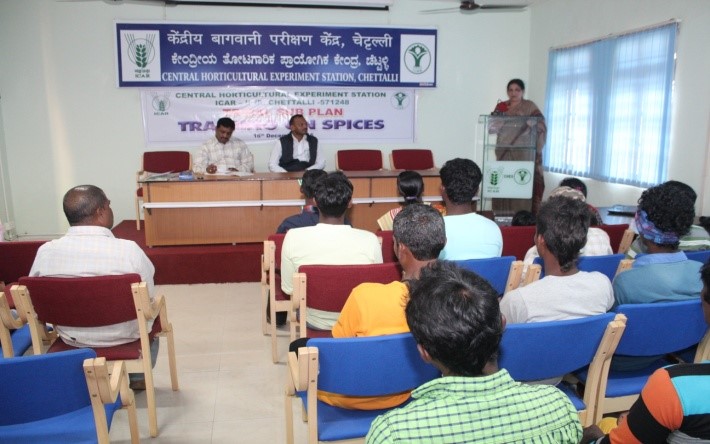
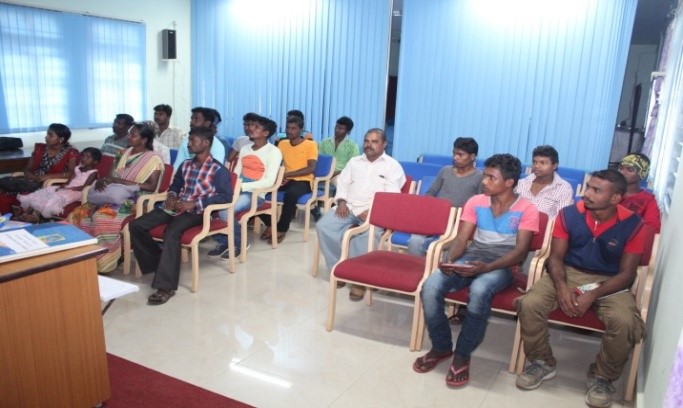
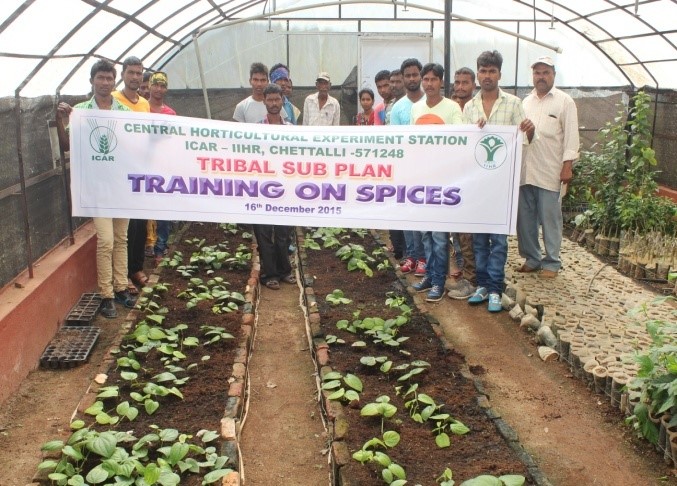
- Exposure visit to IIHR, Hesarghatta and KVK, Hirehalli:25 Tribal beneficiaries of Nakoor Shirangala village were taken to IIHR Bengaluru and KVK Hirehalli for 3 days from 16-12-2015 to 18-12-2015 .The benificiaries were taken to TTC, IIHR Bengaluru. Concerned concerned scientist took them theoretical class and explained the activities of the station. Also the various micro nutrients application to vegetable crops and Banana were also taught to them. Field visits like flower plots, nursery and minor fruit crops plots also demonstrated. The beneficiaries were taken to KVK Hirehalli. The activities of the station is explained and visit to demonstration plots were made.
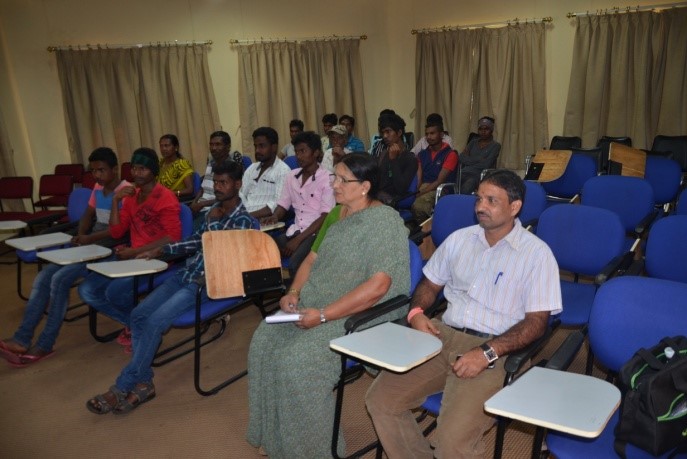
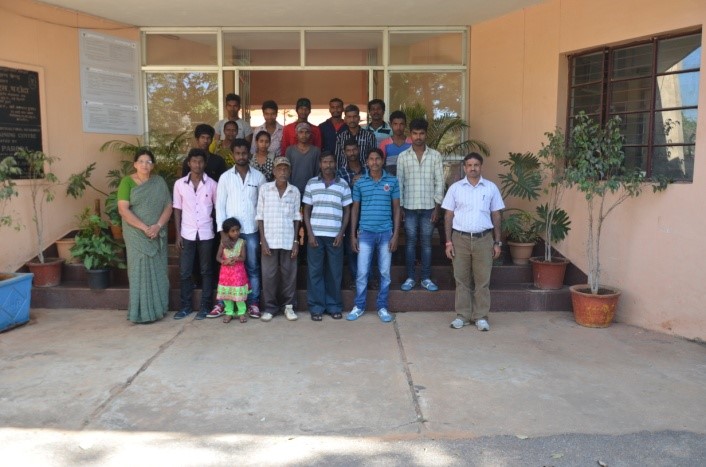

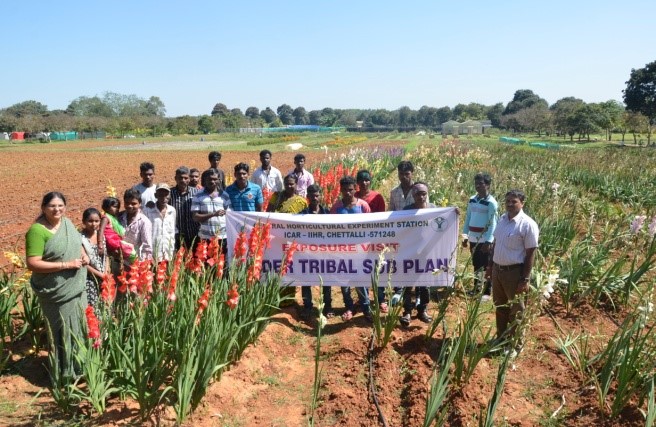
Seed and plant multiplication
The station has 4 hectare nursery unit good infrastructure for multiplication of diseases free healthy plants for Coorg mandarins, passion fruits, avocado etc. . The mother plants as well the seedlings and buddlings of Coorg mandarin are maintained under net house for protection against vector transmitted diseases. In addition, budded plants of a rose, China rose and pepper are also being propagated for distribution. Breeder seed of Coorg honey dew papaya are being multiplied to supply to the growers all over India.
Bee-keeping
An apiary was established with the objective of studying the role of bee management practices for increasing productivity of horticultural crops and for increased honey production. All the four species of bees apis dorsata, a. Cerana indica, a. Florea and trygona sp. Are found in the area. More than 50 plant species served as pollen and nectar forage for the bees during the year. Schefflera spp. And bidens pilosa, are very good nectar sources during april to june. The maximum honey flow periods are during April-May and December. Dividing colonies during march with four frame strength was the best in colony building and honey production. An ant proof stand has been developed and popularized. There was sustainable yield increased was observed in most of fruit crops and coffee. 50% of crop yielding was observed in citrus by bee pollination. The station is providing training and technical guidance to the growers of the region on honey bee management.
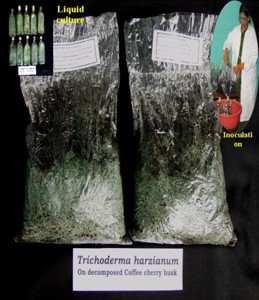
Trichoderma production
Trichoderma harzianum kodagu isolate was isolated from the soil of Kodagu region by the scientists of CHES, Chettalli. It has been found effective in management of pepper wilt, root rot of Coorg mandarin, rhizome rot of ginger and cardamom. Two applications of Trichoderma one as pre monsoon and other post monsoon were recommended for management of these diseases. One kg of Trichoderma mixed with 100 kg of fym needs to be applied for disease control at Chettalli it is multiplied on coffee cherry husk and provided to the grower at reasonable costs.
Mushroom spawn production
The spawn of oyster mushroom is being multiplied and supplied to the mushroom growers. Locally available agricultural wastes can be used as substrate. The training of mushroom production is also organized for the growers. Temperature and humidity is highly favourable to grow this mushroom in this region. A small demonstration production unit is functional at the station.
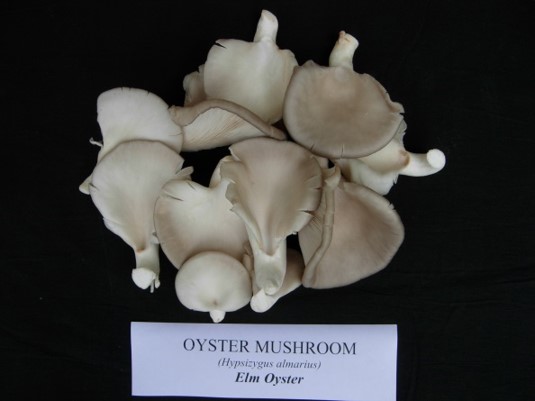
Vermicompost
The station is also maintaining a small demonstration unit of vermicomposting. Where in the decomposable farm produce wastes (banana wastes) can be recycled by using earth worms.
Trainings
This station regularly conducts training on nursery management fruit production technology, Mushroom cultivation, apiculture etc., for the benefits of the local growers.
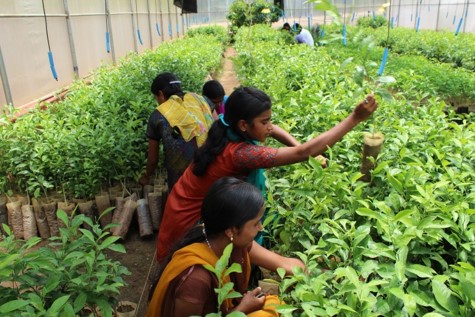
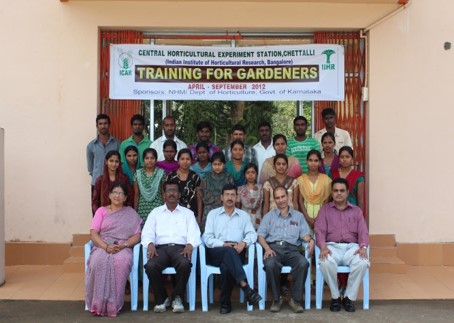
Field days
This station organized field days of various crops such as Rambutan, Litchi, Avocado etc. at regular intervals for creating awareness among the growers.
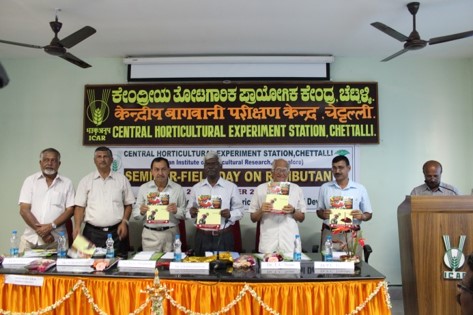
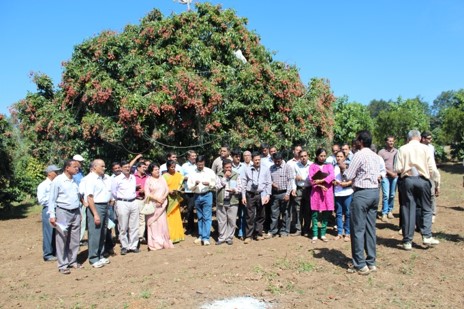
Exhibitions
This station regularly organizes exhibitions to show causing all technology of IIHR and CHES at regular interval. This station also participating in exhibition organized by various organization at regular interval.
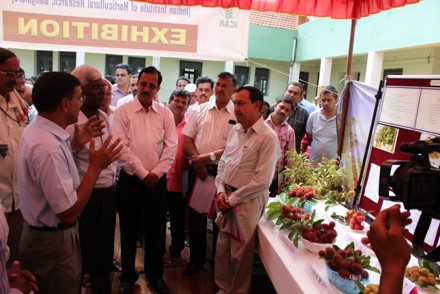
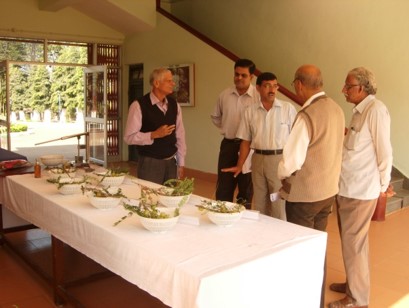
Important visitors
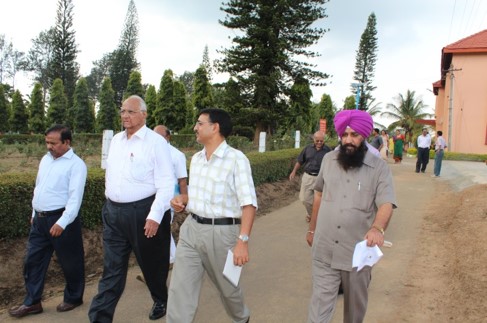
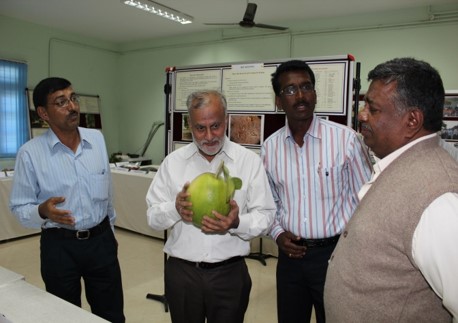

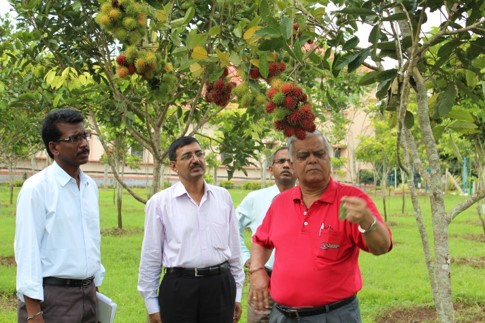
Publication
Technical bulletins
- Rambutan: an underutilized fruit crop for tropical humid climates, 2007 (in English and kannada)
- Improved technology for Coorg mandarin production, 2007
- Promising lines of underutilized fruits at CHES, Chettalli, 2011
- Central Horticultural Experiment Station, Chettalli : at a glance, 2011 (In English, Hindi and kannada)
- Production of quality planting material for Coorg mandarin 2012
- Gunamattada kodagina kittale sasigala utpadane (In kannada), 2012
- Mali tarabethi kaipidi (In Kannada) (handbook of gardeners training), 2012
| ಹೆಸರು | Designation | ಇಮೇಲ್ | Profile Photo |
|---|---|---|---|
| Rajendiran S | Senior Scientist & I/c Head | rajendiran.s@icar.gov.in |
 |
| Nayan Deepak G | Scientist(Fruit Science) |
 |
|
| Madhu G S | Scientist | madhu.gs@icar.gov.in |
 |
| A.T. Rani | Scientist (Agri. Entomology) | rani.t@icar.gov.in |
 |
| B.M. Muralidhara | Scienntist (Fruit Science) | mullidhara.m@icar.gov.in |
 |
| ಹೆಸರು | Designation | ಇಮೇಲ್ | Profile Photo |
|---|---|---|---|
| Jagadish A.M. | Technical Assistant (Driver-Workshop) |
 |
|
| Shivaraj.D.T | Technician(Field/Farm) |
 |
|
| Lijina | Technical Assistant(Lab) |
 |
|
| Giriraja Naik | Technical Assistant(Lab) |
 |
|
| Deepa.T J | Technical Assistant(Library)-T3 |
 |
|
| Amrit Kumar | Technical Trainee (T-1) |
 |
|
| Bhanu Pratap Singh Pandoliya | Technical Trainee (T-1) |
 |
|
| Shreenath Mishra | Technical Trainee (T-1) |
 |
|
| Suvam Mishra | Technical Trainee (T-1) |
 |
| ಹೆಸರು | Designation | ಇಮೇಲ್ |
|---|---|---|
| Senthil Kumar P. | Asst Administrative Officer | psk@iihr.res.in;senthil.p@icar.gov.in |
| Parameshwari | Skilled Support Staff | |
| Mayandi K. | Skilled Support Staff | |
| Shankar H.L. | Skilled Support Staff | |
| Ramesh B.K. | Skilled Support Staff |
